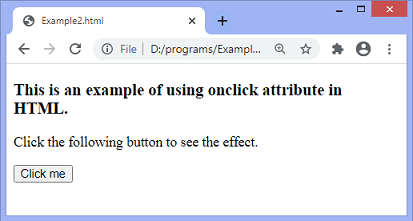
win.scrollTo(x,y) Scroll the window to the given coordinates (x,y). win.scrollBy(x,y) Scroll the window x pixels right and y down relative the current scroll. We already talked about scrolling a window in the chapter Window sizes and scrolling. Move/resize methods do not work for maximized/minimized windows. These OS-level functions are hidden from Frontend-developers. JavaScript has no way to minify or maximize a window. Let’s open a window with minimal set of features, just to see which of them browser allows to disable: There is also a number of less supported browser-specific features, which are usually not used.

left/top (numeric) – coordinates of the window top-left corner on the screen.There must be no spaces in params, for instance: width=200,height=100. It contains settings, delimited by a comma. params The configuration string for the new window. If there’s already a window with such name – the given URL opens in it, otherwise a new window is opened. Each window has a window.name, and here we can specify which window to use for the popup. The syntax to open a popup is: window.open(url, name, params): url An URL to load into the new window. So the first one is blocked, and the second one is not. The difference is that Firefox treats a timeout of 2000ms or less are acceptable, but after it – removes the “trust”, assuming that now it’s “outside of the user action”. Most browsers block popups if they are called outside of user-triggered event handlers like onclick.


So now most browsers try to block popups and protect the user.
Javascript popup window onclick windows#
A bad page could open tons of popup windows with ads. In the past, evil sites abused popups a lot. A popup can navigate (change URL) and send messages to the opener window.So opening a popup from a third-party, non-trusted site is safe. A popup is a separate window which has its own independent JavaScript environment.for OAuth authorization (login with Google/Facebook/…), because: Still, there are tasks where popups are still used, e.g. So, popups is not something we use everyday.Īlso, popups are tricky on mobile devices, that don’t show multiple windows simultaneously. As of now, there are other ways to do that: we can load content dynamically with fetch and show it in a dynamically generated. The initial idea was to show another content without closing the main window. Most modern browsers are configured to open url in new tabs instead of separate windows. If( & & .…And it will open a new window with given URL. *Added validation to prevent creating scheduled outbound comms*/


 0 kommentar(er)
0 kommentar(er)
